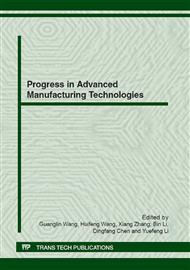p.117
p.123
p.127
p.132
p.136
p.142
p.147
p.152
p.156
A Comparative Study on Modeling of High Temperature Rheological Behavior of AZ80 Magnesium Alloy Using Artificial Neural Network and Inverse Method
Abstract:
Artificial neural network (ANN) and inverse method were employed in modeling the rheological behavior of the AZ80 magnesium. The hot deformation behavior of extruded AZ80 magnesium was investigated by compression tests in the temperature 350-450 and strain rate range 0.01-50 s-1. Investigation of flow stress curves and microstructure of the compression specimen illustrate occurrence of dynamic recrystallization. The inverse method of non-liner regression was used to determine the parameters of the suggested constitutive equation. The maximum relative errors at different temperatures and different strain rates between experimental and predicted flow stresses by ANN and inverse method were compared. The results show the ANN derives statistical models have better similar prediction ability to those of inverse method, especially at high strain rate. This indicates that ANN can be used as an alternative modeling tool for high temperature rheological behavior studies.
Info:
Periodical:
Pages:
136-141
Citation:
Online since:
August 2012
Authors:
Price:
Сopyright:
© 2012 Trans Tech Publications Ltd. All Rights Reserved
Share:
Citation:


